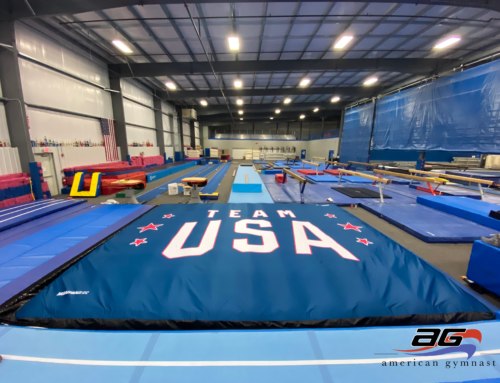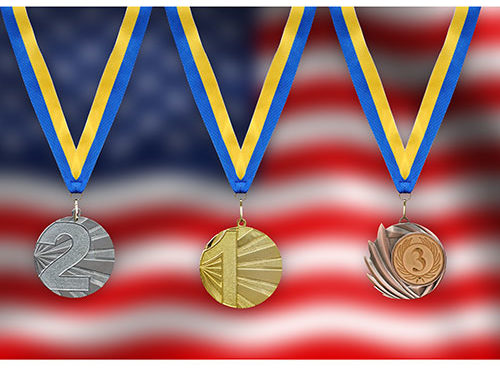What physical skills do you use to test a young kid for competitive gymnastics?
Now that I’ve told you the 14 qualities I look for in a young boy I’m evaluating for competitive gymnastics, I’ll share some of the specific ways I look for and test for each of these qualities. I’ve certainly adapted this process over the years, essentially finding quicker, more reliable, and more efficient ways to determine whether a kid has what it takes. Some qualities require specific skills; others, simply observation. This first list will just include the “physical” tests I typically use. Although I may not always have time to look at all of the tests I’ve listed with each quality below, this gives you a lot of examples of easy tests that I have found to be very effective. Note that several of the skills can test for more than one important attribute.
Physical
1. Coordination: Ask the kid to simply run down a vault runway. Coordinated kids tend to run normally, while uncoordinated kids run awkwardly. Show the kid how to do proper jumping jacks, and then ask him/her to do them. Show the kid how to run and hurdle onto a springboard and do a straight jump off. Some 5-year-olds may have a little trouble at first, but in general it’s a pretty good indicator. Uncoordinated kids simply cannot figure out how to jump from one foot to two feet, and either stop before the board and jump off two feet, or simply run across the board. Try to teach the kid how to do a cartwheel (some kids may already know how to do one). Uncoordinated kids may have an EXTREMELY difficult time understanding what you are trying to get them to do, while coordinated kids often pick it up right away. The cartwheel is a great test of flexibility, strength, and form as well; note how easily they get into the straddle position, if they can support themselves upside down, and if they can straighten their legs when you ask them to.
2. Flexibility: Pike and pancake stretches…pretty simple. It’s also a great time to ask them to straighten their legs and point their toes. See if they can “hyperextend” their knees while sitting (knees stay on the ground and heels come off the floor), and see how close to the ground their toes can get while pointing their toes. Ask them to squeeze their feet together tightly and try pulling them apart. A bridge is also a great test of both strength and flexibility in the shoulders and back, and I have found it to be quite a useful test. Remember the cartwheel test discussed under coordination demonstrates flexibility too.
3. Core strength/body tightness: Show them a hollow position on the floor and see if they can follow your directions and hold a good shape. Ask them to do “rock-and-rolls” without hands and holding a nice tucked shape, or possibly even hollow rocks if they’re pretty strong. Ask them to do an arch hold with their feet together, legs straight, and arms by their ears. Ask them to do a simple forward roll and stand up with their arms in front (not touching the floor), and with their knees together. Have them do a handstand with their stomach against the wall, and ask them to stay very tight while trying to pull their feet apart. Ask them to push up very tall and get a feel for how tight they are in their body by gently pushing down on them. Help mold them into a correct shape by straightening out their lower back and their shoulder angle, and see if they can understand what you’re telling them and hold the shape. Also having them do straight jumps on a trampoline can show a lot about body tightness as well as coordination. Kids who lack core strength and/or coordination “jiggle” a lot while jumping and can also get very out of control.
4. Leg form/toe-point: See the flexibility section above. Another great place to look is on rings; have them do some basic swings back and forth while keeping their legs straight, feet together, and toes pointed. It will reveal their form potential immediately.
5. Body alignment: The handstand against the wall I mentioned under core strength/body tightness is the best place to look. The main idea is to see what kind of shape you can mold them into, with a straight line in both the upper back and lower back. You can also have them simply stand with their back against the wall and simulate a handstand “upside down.” Have them put their arms over the head with the shoulders against the wall while also trying to touch the entire back against the wall. The challenge is to get the lower back to press against the wall rather than letting the hips arch forward.
6. Upper body strength: A chin-up is a great simple test that is very difficult for young boys; only the strong ones can really do any from a hang. You can try them on rings or on a bar. If they’re close, just help them up to a bent-arm position and have them hold their chin above the bar (or between the rings) for 10 seconds. An L-sit on parallettes is a GREAT test because it shows both upper body strength AND core strength. A pullover on a low bar or possibly a high bar is also a great test, as it also tests both upper body and core strength. A 5-year-old or 6-year-old who can do a pullover without help (or even come close to doing one) is a RARE find, and a great indicator of potential. Also having them do a straight body support hold and possibly straight body swings on p-bars (spotter ready with hands on each side of the body) is a quick indicator of upper body strength.
7. Leg strength: Watching them run, jump off of a springboard, and do straight jumps on the trampoline is about all I need to see in this department.
Next I’ll discuss some specific ways to detect the “non-physical” attributes on my list. Many of these can be evaluated by simple observation, but I’ll discuss some of the things I’ve learned to take special note of.
Any other physical tests you’ve found very helpful other than the ones I’ve listed above?



Leave A Comment